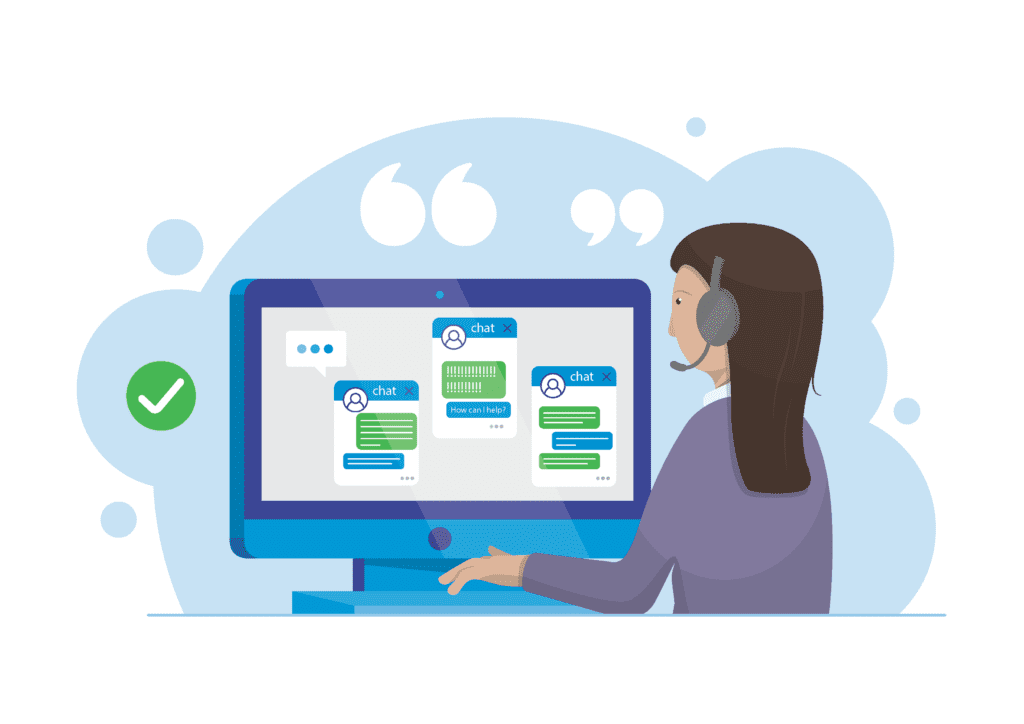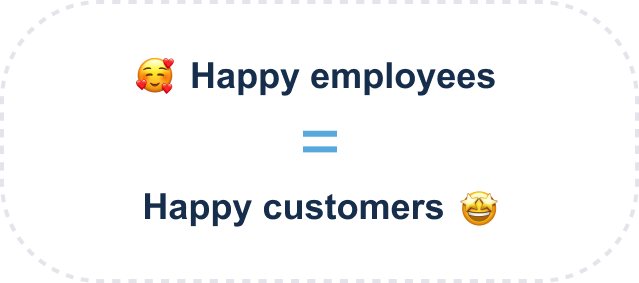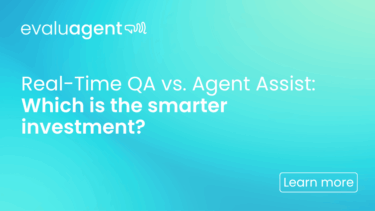Employee engagement is a hot topic at the moment – especially within fast paced environments like contact centres.
Agents have to deal with many frustrations during a shift, including difficult customers, heavy workloads and unpredictable IT systems. All of these things have a sizeable impact on their ability to deliver a great customer experience.
We also understand the pressures contact centre leaders are under to reduce costs at every turn and keep their businesses efficient. Don’t get us wrong, efficiency is great – but not when it comes at the expense of employee morale.
Be it answering the phone, replying to a customer tweet or email, it’s absolutely essential to have the people representing your brand feeling good about themselves and the work that they do. If your agents feel at their best, your customers are going to receive the best experience.

In this guide, we want to help forward-thinking professionals prepare themselves and their team to focus on the 21st century contact centre. The best way is to adopt one simple notion:

Happy employees, engaged employees, motivated employees, they can all be found under one topic…
Employee engagement.
What is employee engagement?
Employee engagement is a broad term that means different things, to different people. Put simply, it’s the level of interest and motivation an employee in regards to their role and the business they work in.
The real fix to engaged employees comes from addressing the day-to-day experience of agents themselves.
Traditionally, there’s been an approach cemented in the mindset of call centre leaders focused almost entirely around efficiency and optimisation.
It’s important to create a lean, cost-effective and high performing business, just like in any other industry, but not at the expense of those working there.
To create a truly customer-centric call centre, you first have to stop viewing agents as resources to be optimised. Instead, look at agents as individuals who need to be engaged with their work in order to give it their very best.
Engaged and happy employees often make the difference between a successful call centre, and a struggling one. They constantly do everything they can to ensure the success of the business, and the well-being of those they work with.
As you might have guessed – simply generating employee engagement isn’t as easy we’d like it to be. In many cases it takes a mixture of using the right engagement tools, having access to the right support, and a change in the culture and behaviour of the call centre.
The four pillars of employee engagement
It would be naïve to think you can have naturally occurring engaged and motivated employees.
The environment they work in, the role they have the training and support they have to complete that role, all play a part in an employee being motivated. So when you notice a lack of motivation or disengagement in a team, try to look at the environment they’re surrounded by.
“When a flower doesn’t bloom, you fix the environment in which it grows, not the flower.”Alexander Den Heijer
In order to improve employee engagement, a manager would need to consider the 4 pillars of employee engagement:
- Feedback
- Investment
- Culture
- Recognition
These 4 pillars of employee engagement represent the key areas that have an impact on the motivation levels of employees. We’re going to look into each one in a bit more detail now.
Feedback
Feedback is probably not the most favourite conversation topic to have with your team, but it could well be the most valuable.
Well delivered feedback and a constructive conversation can give guidance on how the employee will build upon the positive feedback received, or work upon an area of development.
Giving effective feedback is a skill worth learning and can relate to situations out of the office too!

Investment
“What if you train them and they leave? Worse still, what if you don’t train them and they stay?”
Training gives employees a sense of value, purpose and is a great way to improve employee engagement through their own performance and independent achievements.
Speak to your HR function if you have one and see what free training courses are available for team members. Don’t forget team leaders need as much training as agents on the front line – so don’t leave anyone out!
Investment in training can be used as a reward and recognition tool as well as employee engagement tool. Read more about using rewards and recognition.
Culture
The founders at EvaluAgent together have over 60 years of experience working in contact centres, managing employee engagement and developing successful customer service teams.
One thing we all agree on is that every successful contact centre has the same thing in common – a positive culture with a can-do attitude.

Remember there are different cultures that can impact on an agents engagement levels.
- Organisational culture
- Department culture
- Team culture
Wherever there’s a leader in place who has the ability to set a standard and ways of working for their work area, a new culture could be introduced. It’s worth spending some time figuring out what the different cultures might be and how they compliment or conflict with each other.
Recognition
Reward and recognition (sometimes known as R&R) go hand in hand with employee engagement, but it isn’t always the obvious things which motivate employees.
Recognition can be just as, if not more, powerful than a reward. Feeling important, valued and having that sentiment openly communicated both to themselves and their peers – now that is powerful.
Engaged employees will show better performance, provide better customer experience and differentiate you from the competition.
We’ve included recognition as one of the ways to motivate a disengaged team – learn more about that here.
An engaged employee works with passion and has a strong connection with the team and overall company objectives.
Employee engagement theories
Employee engagement can be defined by how employees think, feel and act.
To start looking at engagement, you’ll need to understand what stage employees are at, to then understand their needs.
If you search for employee needs, you’ll probably come across some form of an illustration originally created in the 1940s – the famous Maslow Hierarchy of Needs.
It takes the viewer through from basic physiological needs for survival all the way up though 5 stages and finally achieving self actualisation. This model has been used in hundreds if not thousands of ways to help form the basis of motivational processes in the workplace, and employee engagement is no different.
Below you can see a new version of the famous triangle, but one that you can use to assess what stage of employee engagement your team are currently at. Plus it gives you steps to take to increase this level where possible.

At the top of the pyramid you can see the golden egg of employees, the highly engaged team player. These people are self-motivated, they enjoy their work and they make management effortless.
However, if you recognise any of the phrases in sections 4 or 5, you should have some sort of a warning system making noises in your head.

Disengaged employees won’t hang around for long, and as we know, staff turnover is expensive for businesses, both in time wasted and resource required to retrain new recruits.
Why is employee engagement important?
Unhappy agents tend to create unhappy customers.
Unhappiness in the workplace not only affects the well-being of the individual, but leads to massive disengagement, apathy and a real lack of motivation to perform.
An unhappy employee will bring a consistent negative energy to each day, creating a toxic environment to the rest of the team…. And no one wants that in a high performing team!
Both your team and the business will benefit from a happy workforce. Just remember the motto from earlier…
Happy employees = happy customers
Now, you’ve seen above how to recognise what an engaged employee looks and acts like, but do you know what an engaged employee thinks and feels?
Below we’ve pulled together a real insight into what goes on inside the mind of an engaged employee:
- What they know
- What they believe
- What they feel
- What they experience
What I know:
- Company purpose (why we exist)
- Ethics, values & cultures (what we believe in)
- Goals (what success looks like)
- Strategy (How we’ll achieve our goals)
What I believe:
- I’m a valued team member
- I make a difference
- I’m proud to be here
- My contribution is meaningful
- I have a good future here
What I feel:
- Informed
- Trusted
- Appreciated
- Supported
- Recognised
What I experience:
- Line of sight between my efforts and organisational goals
- Inspiring and ethical leadership
- Clear role and performance expectations
- An environment and tools to support me to do my best
So, what can we do to keep those who are engaged at that level, and turn disengaged agents into motivated and engaged agents?
You’ve probably read a dozen lists of ways to improve employee engagement in the office,. Here we’ve listed a few more unique ideas to consider:
- Promote lunch and learns to share knowledge across teams and departments
- Encourage volunteering
- Inspire creative and team thinking with office activities
- Challenge your team so they reach their potential
- Help your team reach personal goals as well as professional ones
- Encourage side projects and curiosity
Everyone needs time away from the office to recharge and it allows agents to bring some of that new found energy back into the team.
How to use technology as an engagement tool
There’s no doubt that as technology adapts to the way we live, it also adapts to the way we work too.
Tech tools and apps can support managing your team and give you a snapshot of performance and progress towards goals and objectives.
Use data from technology tools to understand which members of your team need the most help and in which areas.
An agent could be great at following correct procedures and processes, but might lack the confidence to have a natural conversation with customers.
Using data to help identify areas for support means your feedback and customer service coaching sessions are going to be more effective and beneficial. Stats and facts are without a doubt going to support better conversations, but they can also support in improving employee engagement and creating a positive culture.
Knowing there’s data behind ratings, feedback and decisions can support both sides and lead to a more open conversation. It results in the chat being less about opinion and more about specific examples and trends that can be seen on screen.
But let’s not just use technology for areas of improvement, remember that it can be used for good too.
Technology doesn’t kill conversations, people do.
Try to use tech to access the information at your fingertips for the purpose of having better conversations with your team, focus on areas to maintain quality and be sure to recognise great customer service and experiences.
The tools and channels you use to communicate with your team are part of your employee engagement process and they can be a strong element in maintaining a positive and engaged team.
Want to see how our platform can support your employee engagement activities? Try it for free or request a demo today.
Almost done!
Now you’re at the end of this article you should:
- have a better understanding of what employee engagement is and relates to
- see the importance of employee engagement in your team,
- recognise unhappy or unmotivated agents,
- have some tips and ideas to improve engagement in your team,
- be ready to look at using technology as a help and support for employee engagement
- know the EvaluAgent team are on hand to chat at any time!
For more resources on employee engagement, quality assurance, coaching and feedback and other CX topics, head over to the Knowledge Hub page.




